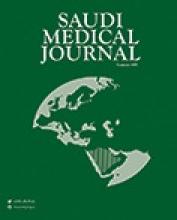Abstract
OBJECTIVE: To verify the incidence of cryptosporidiosis among Turkish elementary school students.
METHODS: This study was conducted in the Department of Parasitology, Faculty of Medicine, Ege University, Turkey during a 3-month period in 2006. We assessed the fecal samples of 707 children using modified acid-fast and phenol-auramine staining followed by modified Ritchie concentration method. All Cryptosporidium species isolates were analyzed by nested polymerase chain reaction (PCR) and restriction fragment length polymorphism (RFLP) to differentiate the genotypes of the isolates. After the coprological examination, 4 samples were found to be positive for Cryptosporidium species oocysts.
RESULTS: In the present study, all 4 oocysts were of zoonotic origin and belonged to Cryptosporidium parvum genotype 2 indicating that in Turkey the potential sources of human cryptosporidiosis is from animals.
CONCLUSION: The application of genotyping to clinical isolates of Cryptosporidium has significantly increased our knowledge and understanding of the distribution and epidemiology of this parasite. The PCR and RFLP techniques represent a more rapid and simple method of genotyping to support epidemiological and clinical investigations than conventional analytical DNA techniques.
- Copyright: © Saudi Medical Journal
This is an open-access article distributed under the terms of the Creative Commons Attribution-Noncommercial-Share Alike 3.0 Unported, which permits unrestricted use, distribution, and reproduction in any medium, provided the original work is properly cited.






